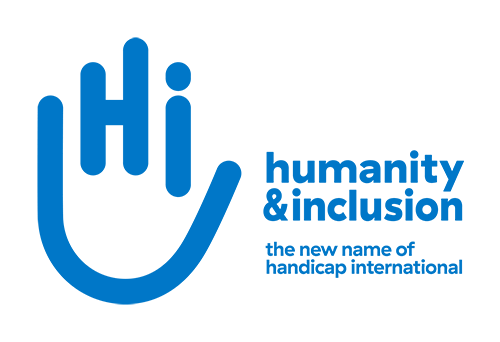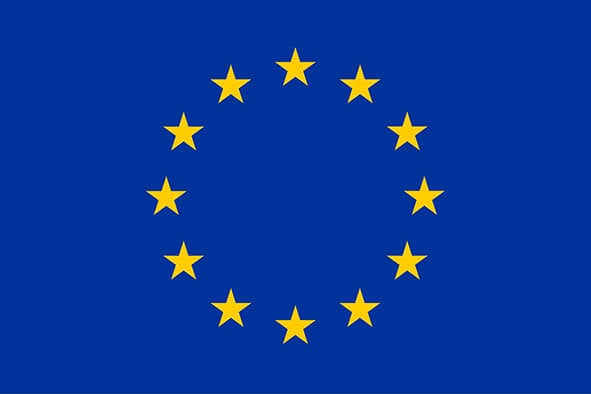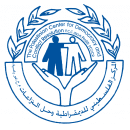استقطاب استشاريين لدراسة تحليل الفجوة الجندرية
Background:
The Palestinian Center for Democracy and Conflict Resolution (PCDCR) is a non-profit organization established in 1998, as an investment of distinguished efforts exerted by a group of Palestinian youth highly motivated and ambitious to develop a Palestinian model promotes democratic principles and modern conflict resolution alternatives. PCDCR has extensive experience in raising community awareness, providing counselling conflict resolution services, and building institutional and community capacities.
PCDCR is implementing the project of Protection, Response and Preparedness to Address Needs of Displaced and Vulnerable Women in Gaza. The main result of the project is: Displaced and vulnerable women (women and girls with disabilities, elderly women and women survivors of violence) have improved access to economic opportunities and gender responsive humanitarian services in Gaza. As gender is conceptualized as the socially constructed difference between women and men and the power relations and dynamics that come about as a result of this.
In context of the Palestinian society, women comprised nearly half of the Palestinian population of 4.75 million people (approximately 50.9% are men and 49.1% of women). Despite this numeric symmetry, the sociocultural, economic, and political reality for Palestinian women is one where discrimination and gender inequality remain pervasive, and women do not enjoy the same rights as men. Moreover, discrimination and gender inequality gap currently facing Palestinian women satiation in several areas, including health, education, employment, political participation, and access to decision-making position.
With focus on health; following the war, march of return and siege in Gaza, the risk of further morbidity and mortality remains a serious concern, from injuries and from the discontinuation of treatment for chronic conditions due to lack of access to health care services and referral. There are gaps in the quality of health services rendered in Gaza, especially when it comes to the support provided to people with disabilities. In addition, stress, loss and living in deteriorated economic and social conditions have had effects on the mental status of the general population.
Both women and men in Gaza are at risk of exposure to violence, distress and disability. However, available data suggest that there is a pattern of gender differentiation in terms of exposure to and perceptions of risk, preparedness, response, physical and psychological impact, as well as capacity to recover.
Understanding the position of women in the health sector and promoting women empowerment is an issue also affecting (and affected by) men, and therefore, it is necessary to remain attentive to the local context. It is very crucial to understand these dynamics and differences between women and men in order to ensure that both humanitarian as well as developmental interventions tackle gender inequalities and discrimination where needed and benefit equally girls, women, boys and men.
So, PCDCR is planning to conduct gender gap analysis on health cluster - health service providers- which aims at studying the differences in the conditions, needs, participation rates, access to resources and development, control of assets, decision-making powers, etc. between women and men in their assigned gender roles.
Purpose of Gender Analysis:
The analysis seeks to understand the impact of the crisis on women, girls, men and boys.
To highlight gender aspects, the particular experiences, needs, rights and risks facing women, girls, men and boys, people with disabilities, people of different ages and ethnicities and other aspects of diversity.
The analysis aims to examine the needs, roles and dynamics of women, girls, men and boys in relation to the health factors brought on by crisis, as well as the level of access to services, and how the other dimensions of diversity intersect with them.
The analysis aims to identify good practices and key standards for coordination, participation, and GBV prevention and mitigation that could improve gender mainstreaming in health cluster
Scope of work:
THE GENDER ANALYSIS FOR THE HEALTH SECTOR SHOULD ASSESS:
- Population demographics. What was the demographic profile of the population disaggregated by sex and age before the crisis? And what has changed since the crisis or programme began? Look at the number of households and average family size, number of single- and child-headed households by sex and age, number of people by age and sex with specific needs, number of pregnant and lactating women. Are there polygamous family structures?
- Gender roles. What were the roles of women, girls, men and boys related to health prior to the crisis? How have the roles related to health of women, girls, men and boys changed since the onset of the crisis? What are the new roles of women, girls, men and boys related to health and how do they interact? How much time do these roles require?
- Decision-making structures. What structures did the community use to make health decisions before the crisis and what are these now? Who participates in decision-making spaces? Do women and men have an equal voice? How do adolescent girls and boys participate?
- Protection. What health and protection risks did specific groups of women, girls, men and boys face before the crisis? What information is available about protection risks since the crisis began or the programme started? How do legal frameworks affect gender and protection needs and access to justice?
- Gendered needs, capacities and aspirations. What are the health-related needs, capacities and aspirations of women, girls, men and boys in the affected population and/or programme? This should include needs, capacities and aspirations relating to reproductive health services and services for survivors of GBV, in addition to wider health care services and information (including as these relate to the availability of health facilities, health workers, drugs and equipment).
So The primary objective of the study is to provide humanitarian actors with guidance for effective integration of gender within the health cluster for more effective, efficient and equitable interventions that meet the specific needs, and priorities of crisis-affected women, girls, men and boys as well as build on their capacities in health sector.
- In addition to what mentioned above the health programmes need to be reviewed based on equal participation and access to services by women, girls, men and boys from the onset of programme planning to implementation. It is necessary to assess gaps in programming, focusing on which women, girls, boys or men were not effectively reached. The use of the gender markers collectively helps to identify gaps to improve programming and response, that mean deepen understanding of gender-based vulnerabilities at health cluster activities (Need assessment and Analysis of gender differences , strategic planning ,design of services, Access to health services, Participation , resources mobilization, Training/capacity building , implementation , Actions to address GBV , Targeted actions based on gender analysis , Monitoring and evaluation based on sex- and age-disaggregated data , Operational Peer Review & Evaluation, information management and Coordinate actions with all partners).
Methodology
- The review should include, quantitative and qualitative data collection and analysis methods to respond the research purpose and objectives about how gender differences and inequalities will affect project outcomes and how the project will differentially affect men’s and women’s health, opportunities and status. Such as:
- Focus groups
- Desk review
- Key informant questionnaires
- Interviews
- Recent statistics
Requested Service and Outputs
The main framework of this study must be built on the Inter-Agency Standing Committee (IASC) Gender Handbook on Humanitarian Action: Women, Girls, Boys and Men - Different Needs, Equal Opportunities and The Gender Handbook for Humanitarian Action considering the following :
- Methodological note
The methodology will be explained concisely. All the instruments used such as interview guide, focus group guide, list of documents and institutions/ persons involved in the analysis, agenda of the meetings (if applicable) will be placed in annex.
- Current situation
This concise part will provide an overview on the current health sector situation from a gender perspective, illustrated as appropriate with references. The analysis will be presented in a format that identifies “strengths and weaknesses”. The analysis will consider the various inter-related causal factors, and will highlight trends and forces which could contribute to the overall change in existing gender-related relations.
All information must be sought disaggregated by sex as a minimum; other criteria (age groups, vulnerabilities, rural/ urban, etc.) need to be included as well, where available.
- Specific issues and response strategies
In this part, the Consultant must provide proposals to contribute to:
- Select objectives to contribute to via existing programs
- Adapt programs to take on these objectives and adequately measure them
- Design / formulate new actions where relevant and possible.
- Identify results for gender equality that will be achieved through the existing programs
- Ensure adequate monitoring and data tracking
- Identify resources where needed
جميع الحقوق محفوظة لموقع جوبس.
Profile of Team Consultant ( Co team ; heath and gender analysis experts)
Experts in Gender analysis and health; they should have:
Qualifications and skills
General professional experience
Working languages
The experts must be fluent in English and Arabic, both oral and written.
DURATION
REPORTING
The consultant is expected to submit the:
- Inception report within the agreed timeline, the consultant is also expected to submit the draft report for comment and feedback from the respective technical people at PCDR and others. The consultant will present the preliminary findings to Health cluster group. Eventually, the consultant is responsible to incorporate feedback provided and submit the final report.
- Fact sheet: to summarize the study into numbers and facts, this fact sheet will be distrusted to INGOs, NGOs and other humanitarian actors as a basic revision for their intervention.it will be no more 5 sheets.
Number of report(s) copies
Draft documents must be submitted to the by PCDCR e-mail. The final report (double-sided) should be sent in soft copy and three hard copies.
ADMINISTRATIVE INFORMATION
- The offer must include a draft methodology of maximum 4 pages of how the expert/team leader perceives and plans to carry out the assignment as well as his/her CV.
- The price of the offer is NEW Israeli Shekel (NIS).
- Under costs, sufficient funds should be foreseen for translations and technical support.
- Under costs, the consultants will present the final draft (power points or other presentation material, handouts on case studies etc.) in a seminar or a workshop to the health cluster key members and others.
- PCDCR is not in a position to provide logistical or secretarial support of any kind to the expert.
- The consultancy is responsible for ensuring that the expert is sufficiently and properly equipped to be operational as of the first day of the assignment
- VAT is NOT eligible and thus recoverable.
Application Process:
- Interested applicants (co experts team / companies) are asked to submit their CVs ,technical and financial offers by hand to the admin assistant office at the 2nd floor of PCDCR building no later than 13th December 2018 at 3:00 PM.









